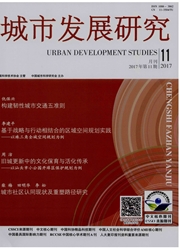

 中文摘要:
中文摘要:
产业遗存再利用规划模式分为正式更新与非正式更新两类.对产业遗存再利用规划模式的选择尚未引起规划师和相关研究者的重视.本文通过对天津棉纺三厂的现状梳理和再利用规划的剖析,提出产业遗存再利用中的规划模式是相关利益主体主动选择的结果,其本质是不同利益主体间的合约安排.进而引入新制度经济学的合约理论,从交易费用与风险规避两个角度对规划模式的选择进行分析,提出最优的规划模式(合约安排)是交易费用与风险之和最低的那类组合.最后运用该理论框架对天津棉纺三厂再利用所采用的规划模式进行了解释.
 英文摘要:
英文摘要:
Industrial heritage reuse planning modes is divided into two categories : formal renewal and informal renewal. In the planning of industrial heritage reuse, academic researchers and planners haven' t paid attention to selecting planning mode. Based on a brief introduction about Tianjin Third Cotton Textile Factory, this paper proposed that industrial heritage reuse planning mode was an initiative selected result of stakeholders. Its very essence was a contractual arrangement between different stakeholders. Then, through the introduction of Contract Theory in new institutional economics, especially from the perspectives of transaction cost and risk aversion, this paper had an analysis on the selection of planning modes. It drew a conclusion that the optimal planning mode (contractual arrangement) was the one which had the minimum of transaction cost and risk. Finally,in turn, this paper tried to apply the theoretical framework above to explain planning mode of Tianjin Third Cotton Textile Factory.
 同期刊论文项目
同期刊论文项目
 同项目期刊论文
同项目期刊论文
 期刊信息
期刊信息
